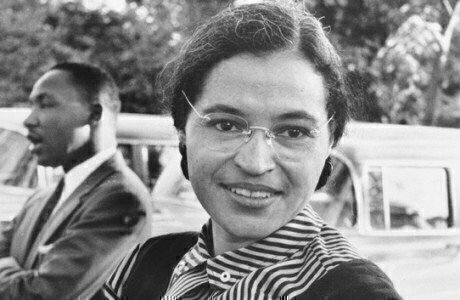Today marks the anniversary of Rosa Parks’ decision to sit down for her rights on a Montgomery, Alabama, bus, putting the effort to end segregation on a fast track.
Parks was arrested on December 1, 1955, after she refused to give up her seat on a crowded bus to a white passenger.
Contrary to some reports, Parks wasn’t physically tired and was able to leave her seat. She refused on principle to surrender her seat because of her race, which was required by the law in Montgomery at the time.
Parks was briefly jailed and paid a fine. But she was also a long-time member of the NAACP and highly respected in her community.
The NAACP realized that Parks was the right person to work on its battle against the system of segregation in Montgomery. It also worked with another group of local leaders to stage a one-day boycott of passenger buses, on the day when Parks went to court.
The group expanded to include other people, chose a name (the Montgomery Improvement Association), and planned an extended boycott.
But the MIA also needed a public spokesman with leadership qualities to make their fight into a wide-ranging cause.
Their pick was a little-known pastor who had recently arrived in Montgomery: Martin Luther King, Jr.
In her later years, Parks said 26-year-old King was chosen because he was a newcomer to Montgomery and didn’t have any enemies in the community.
The combination of the MIA, King, Parks, and a united African-American community made the boycott a success. About 75 percent of the public transportation customers in Montgomery were Black, and they remained united for more than a year, as the boycott crippled revenues for the bus line.
Parks lost her job and King’s home was attacked, but the movement kept the boycott in place for 381 days.
At the same time, the segregation fight was making its way to the Supreme Court.
On November 13, 1956, the Supreme Court ruled in the case of Browder v. Gayle, agreeing with a district court that segregation on buses operating within Alabama’s boundaries was illegal, because it deprived people of equal protection under the 14th Amendment.
The legal team that had pursued the case for the NAACP included Thurgood Marshall, a future Supreme Court justice. It had decided that Parks’ case would get tied up in the state court system and filed a separate suit on behalf of four other women.
After the boycott ended, Parks moved to Virginia and to Michigan. She eventually worked in the office of Representative John Conyers until her retirement.
When she passed away at the age of 92 in 2005, Congress voted to have Parks honored by having her coffin at the Capitol Rotunda for a public viewing.
At the time, she was only the 30th person afforded that honor. She was the first woman to receive the honor, and her coffin sat on the catafalque (decorative wooden framework) originally built for the coffin of Abraham Lincoln.








